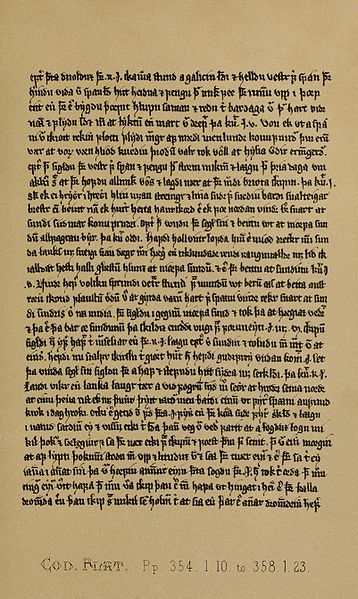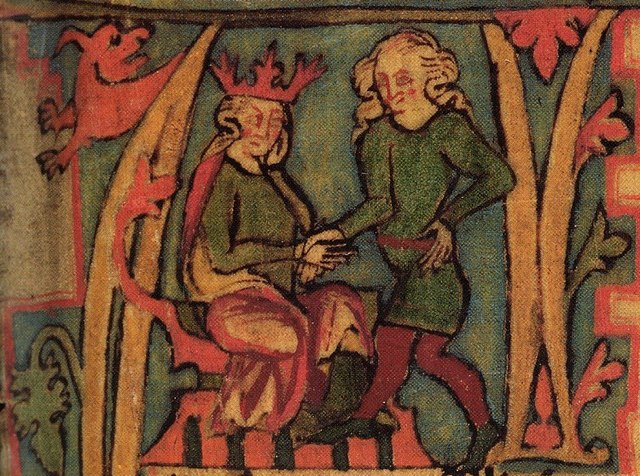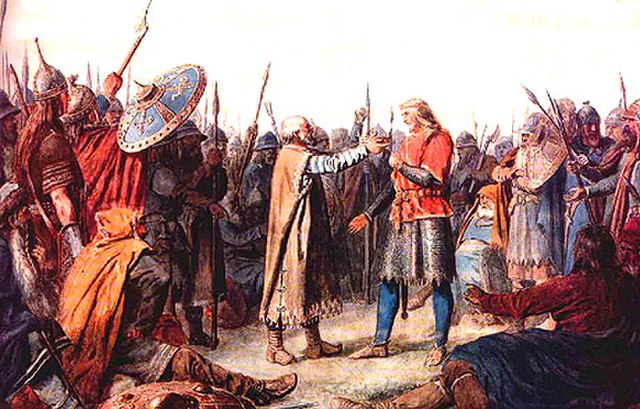The Orkneyinga saga is a narrative of the history of the Orkney and Shetland islands and their relationship with other local polities, particularly Norway and Scotland. The saga has "no parallel in the social and literary record of Scotland" and is "the only medieval chronicle to have Orkney as the central place of action". The main focus of the work is the line of jarls who ruled the Earldom of Orkney, which constituted the Norðreyjar or Northern Isles of Orkney and Shetland and there are frequent references to both archipelagoes throughout.
An example of a page from the Orkneyinga saga, as it appears in a printed copy of the 14th-century Flateyjarbók.
An early 19th century illustration of "Mount Hekla from Odde"
Magnus Barefoot's army in Ireland. It has been argued that Magnus's actions in the west form the basis of the saga narrative about the submission of Orkney and Shetland to Harald Fairhair's fleet.
"Odin Rides to Hel" (1908) by W. G. Collingwood
Orkney, also known as the Orkney Islands, is an archipelago in the Northern Isles of Scotland, situated off the north coast of the island of Great Britain. Orkney is 10 miles (16 km) north of the coast of Caithness and has about 70 islands, of which 20 are inhabited. The largest island, the Mainland, has an area of 523 square kilometres (202 sq mi), making it the sixth-largest Scottish island and the tenth-largest island in the British Isles. Orkney's largest settlement, and also its administrative centre, is Kirkwall.
Ring of Brodgar, on the island of Mainland, Orkney
Midhowe Broch on the west coast of Rousay
According to the Orkneyinga Saga, Harald Fairhair (on the right, with fair hair) took control of Orkney in 875. He is shown here inheriting his kingdom from his father Halfdan the Black, in an illustration from the Flateyjarbók.
Artist's conception of King Olaf Tryggvason of Norway, who forcibly Christianised Orkney. Painting by Peter Nicolai Arbo.








